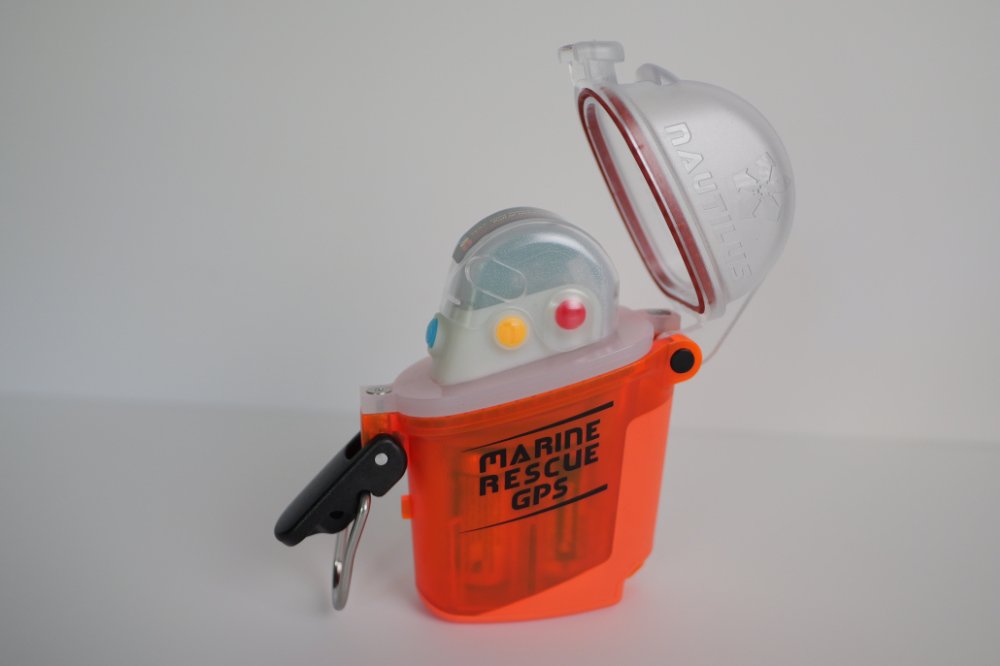Nautilus LifeLine: the missing link in dive safety
One of my biggest fears is the idea of surfacing, looking around, and not seeing the boat. A rare but not impossible eventuality, caused by unexpected currents, a sea that changes quickly, or even human error, like a distracted captain.
As divers, we have always relied on surface marker buoys (DSMBs), mirrors, and various whistles. Useful tools, but they only work if someone is close enough to see or hear us. But what if the boat is far away? What if the sea is rough and the waves are hiding our small orange marker?
The answer is called Nautilus LifeLine. For me, it has become a fundamental part of my gear: a GPS locator with a VHF transmitter for digital emergency signals, waterproof down to 130 meters.
Through a dedicated app, you can also program the MMSI (Maritime Mobile Service Identity) number of your boat, which is its unique identification code.
Its operation is based on three buttons, protected by a cover.
The blue button turns it on, putting it in standby and starting the search for GPS satellites.
The yellow button is for two distinct, non-emergency functions. With a 5-second press, the Test sequence is initiated: the device acquires its GPS position and sends a single message with its coordinates to all surrounding vessels with AIS to verify that everything is working correctly. With a prolonged 8-second press, on the other hand, the “Position Advisory” mode is activated: in this case, the device transmits its position continuously until deactivated, allowing your own boat to follow your movements without raising a general alarm.
Finally, there’s the red button: a 5-second press triggers the actual alarm. The device sends a DSC* distress signal and an AIS** alert that is displayed on all vessels and rescue stations for miles around, communicating the precise GPS coordinates.
It’s the difference between passively hoping to be found and actively calling for help, telling them exactly where we are.
In our sport, where we rely heavily on our gear for our safety, ignoring technology like this is a choice we can no longer afford to make.
Download the user manual here.
* DSC (Digital Selective Calling): Sends a digital distress request on VHF channel 70 (156.525 MHz), which is the universal emergency channel.
** AIS (Automatic Identification System): Transmits the position and an alert signal on AIS frequencies (161.975 and 162.025 MHz), which are received and displayed on all modern chartplotters on surrounding vessels.

